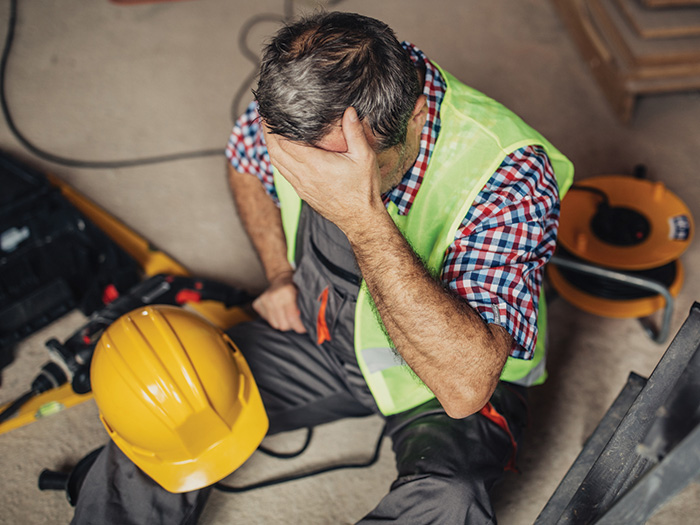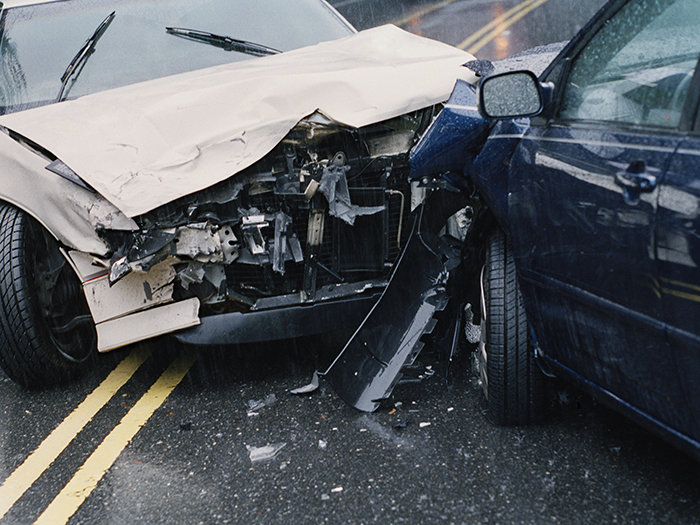The Silent Saboteur: How Kinesiophobia Affects Workers’ Comp Recovery

Workers’ compensation professionals are well aware of the detrimental effect chronic pain can have on return-to-work and patient wellbeing. Despite this, kinesiophobia — the fear of reinjury — is still said to affect the majority of workers who have experienced a workplace injury.
Deemed by experts to be a significant barrier to recovery, this common affliction seems to demand more attention from workers’ compensation practitioners than it is currently getting, but treatment options are available and effective, if a multidisciplinary approach is employed.
What a Phobia Entails
“Kinesiophobia is generally considered an excessive or irrational fear of movement or activity, so fear is a large factor, and fear avoidance is a vicious cycle,” said Kathleen Fink, associate medical director with Optum Workers’ Comp and Auto No-Fault. “When people get fearful, they start to catastrophize, they’re afraid that something worse is happening and they start avoiding the behaviors.”
The vicious cycle Fink refers to is known as the “fear avoidance model,” and it will ring true for those in the workers’ comp space: Fear leads to catastrophizing, resulting in avoidance and hypervigilance, and ending with depression and disability.
The final step in the cycle is particularly concerning, as we know that mental illness is highly correlated with opioid use disorder. According to the National Survey on Drug Use and Health, 62% of the two million American adults suffering from opioid use disorder in the 2015-2016 study period had a comorbid mental illness, with 24% of that figure diagnosed with a “serious” mental illness.
The prevalence of kinesiophobia is similarly concerning.

Nanesha Courtney, national product manager for advocacy, biopsychosocial, disability and return-to-work services, Broadspire
A study focused on upper limb fractures published in the Indian Journal of Physical Therapy and Research found a 50-70% incdence rate. A separate and unrelated study from a Brazilian journal assessing low back pain, one of the most common and most elusively persistent injuries in workers’ comp, found similar rates of occurrence, a finding shared by numerous other studies and literature reviews.
Given the stakes for failure and the frustratingly common characteristics of kinesiophobia, the need for appropriate assessment tools is paramount. “To successfully treat it, you need to measure it,” said Fink.
The most common scale is The Tampa Scale of Kinesiophobia, which contains 17 questions or 11 questions. The Tampa Scale for Kinesiophobia asks the patient to mark how much they agree or disagree with each of the 17 or 11 questions using a four-point scale. The final score can range between the minimum of 17 and the maximum of 68 points, with higher scores indicating more kinesiophobia symptom incidence. In the Fear Avoidance Belief Questionnaire (FABQ), there is a regular subscale and a work subscale, which can of course lend itself to the workers’ comp arena.
Taking the Right Step Forward
“I would classify this as an opportunity,” said Bill Zachry, workers’ comp industry veteran and formerly head of risk management at Albertsons. “If you’re having this resistance to returning to work, utilizing this scale could help address it and make it distinct from other barriers to return to work.” Zachry noted that in his career, he noticed kinesiophobia frequently in claims, but that the terminology was absent, which led to misunderstandings about malingering and similarly stigmatized behaviors.
If a claimant does come up with a score that warrants intervention, the options can seem overwhelming, but experts agree one way that has been done in the past is a better way. The better way starts with the very first visit.
“Key to minimizing anxiety and subsequent fear avoidance behavior starts with a thorough physical exam with palpation of the injured area in order to provide the patient with a diagnosis and education on safe movement. The physician should advise against bedrest, and they should not proceed with an early x-ray,” explained Dr. Carrie Stewart, a board certified physiatrist and Medical Director of Carisk Partners Outcomes Division.
“Early imaging of the low back will often identify spinal arthritis that is unrelated to the symptoms they are experiencing but will result in worsening fear and anxiety on the part of the patient. For low back injuries, I would estimate up to 30% will come in with fear and anxiety placing them at risk for kinesiophobia. Low back pain in particular provokes a high emotional response from patients,” Dr. Stewart said.
Tate Rice, Healthesystems’ director of product management, and also a physical therapist, echoed Stewart’s recommendations. “I would purposely avoid using the word ‘pain’ and focus instead on discussing objective deficits. At the end of that first visit I would spend time educating the patient on how the body heals, the purpose of inflammation and pain, and the importance of active movement to resolve inflammation and pain, as well as a way to address functional limitations.”
A Sound Approach
This initial effort to reduce escalation of the fear is vital, since kinesiophobia as a standalone condition specifically can increase the perception of pain. A 2021 study published in Brain Sciences involving a cohort of individuals with chronic low back pain and obesity bears this out, noting that “kinesiophobia, but not pain catastrophizing, significantly explained both pain intensity and pain-related disability.”
Given this reality for many kinesiophobic patients, treatment needs to be more intensive. For most experts, this necessitates a new method.
“If I could wave my magic wand, we would start in an multidisciplinary pain management approach where we’re not only using these physical modalities, but we’re also using the psychological modalities to address some of that catastrophic thinking before it becomes catastrophic thinking,” said Nanesha Courtney, national product manager for advocacy, biopsychosocial, disability and return-to-work services for Broadspire, who has 30 years of experience in the industry.
“We know certain antidepressant medications can be beneficial for treating pain, as well as yoga, massage and acupuncture, which are becoming more and more accepted in the workers’ compensation arena. If we can catch these intrusive thoughts before they become catastrophic, we can prevent the severity that comes with kinesiophobia.”
In addition to a multipronged effort with a team of providers, the plan should be tailored to the individual. Incidentally, this is a major part of the biopsychosocial model of care being touted with greater regularity by workers’ compensation organizations, an indicator that uptake is on the horizon.
“It’s not a one-size-fits-all approach,” said Josh Williams, senior director, clinical solutions and strategic partnerships at FIGUR8, a company that provides technology to simplify data on musculoskeletal function at any point of care. “The experience of kinesiophobia can be somewhat irrational. The belief that if you move you could make things worse can come from a number of different perspectives; it can be behavioral, emotional, psychological. So that ability to have an interdisciplinary team to evaluate the causes of kinesiophobia and develop a personalized plan based on those root causes is very important.”
Ultimately, the experience of pain is personal, and these treatment plans should address that. Particularly with chronic conditions, the workers’ comp system’s willingness to participate in the process will dictate the claimant’s efforts to do the same.
“People tend to be much more fearful if we don’t know what they’re feeling,” said Fink. &











